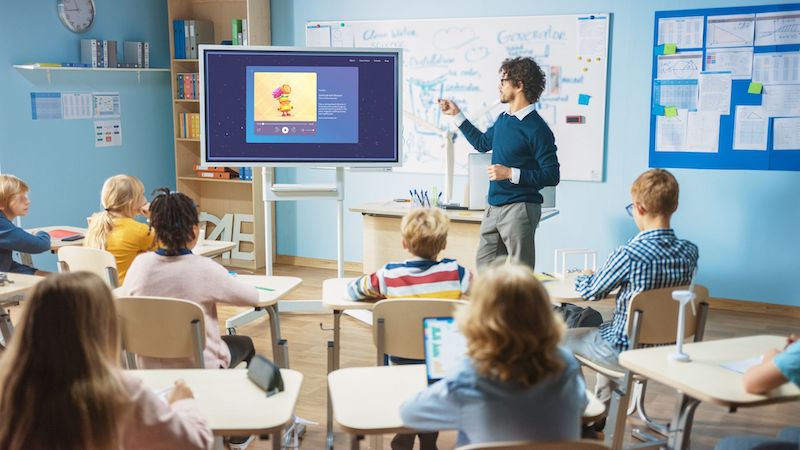
- 3 mins
5 Ways Moshi Can Help You Manage Your Classroom

Classroom involvement and a sense of belonging in the class environment significantly impact a child’s development even from a young age. Vitiello, et al. (2012) write that how a classroom is organized and how a teacher uses the setting will impact a child’s frequency and quality of engagement with others.
Teachers often love being creative! This might involve planning a classroom’s decorations, posters, and layouts even long before the new school year starts. Teachers of younger children want everything to be ready and look inviting when their students come to class for the first time. Perhaps there would be pictures on the wall, posters about exciting topics and many activities to choose from. There could be birthday calendars, charts filled with math exercises and games, and theme-based decor. While this can all be very cute, it can also be somewhat overwhelming. Imagine walking into a classroom filled with new faces, people whom you are not familiar with, and visual stimulation everywhere! It could easily be too much. Children may even think it looks inviting, but there won’t necessarily be an opportunity for shared ownership in the class.
When starting a new school year, don’t be afraid only to have the bare necessities on the walls. Consider your available space carefully and find opportunities to encourage shared work and even shared space. Children of all ages should be encouraged to explore and share their interests and ideas with other class members. Any work created in class by the students can be displayed on the walls. This would then form part of the classroom’s decor. Shared work and children’s work on display are not only decorative, though. Seeing their work in the environment provides a sense of ownership and belonging. Children will be more likely to feel like it is their class, their space, and their opportunity to explore, learn and share enjoyment and experiences with others.
There is no such thing as the best layout for a classroom. How a space is set up and utilized would largely depend on what you, as the teacher, want to achieve in the classroom. Seating arrangements usually have the most significant impact on the layout. Tables and chairs arranged in small groups would encourage social interaction between students, while individual tables will limit the interaction. Seats can be set to focus on the teacher or in a way that would support teacher-led activities when needed. This would also encourage student interaction and group work. These layouts can be applied to any age group.
Other considerations would be whether you have certain students in your class who perform well when seated close to a particular peer. Others may need to have a spot further away from their close friends. This is especially so if sitting together negatively affects their ability to be focused. For older students, it may be possible to allow them to select their seating in the classroom at times. It would be advisable to have clear rules to ensure that students understand that it’s their responsibility to be sensible in the classroom when they sit with their friends. Younger students often feel safer when their teacher assigns a specific seat to them. It provides a form of safety and predictability.
While it may require a mind shift for teachers to start their class with very little and then provide opportunities for students to co-create their space and include their ideas in the classroom, it can be an exciting journey to take on with your students. Encourage them to share their work, thoughts, and interests and celebrate their efforts and contributions by co-creating a shared space where everyone belongs.
Van den Berg, Y. H., & Cillessen, A. H. (2015). Peer status and classroom seating arrangements: a social relations analysis. Journal of experimental child psychology, 130, 19–34.
Vitiello, V. E., Booren, L. M., Downer, J. T., & Williford, A. (2012). Variation in children’s classroom engagement throughout a day in preschool: Relations to classroom and child factors. Early childhood research quarterly, 27(2), 210–220.